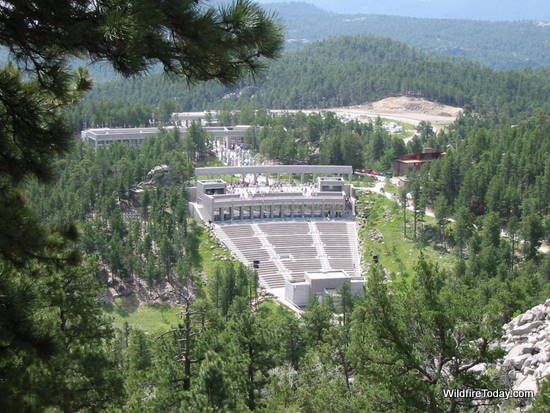An ecologist working for the U.S. Forest Service says pine needles killed by a mountain pine beetle infestation ignite faster than green needles. Here is an excerpt from the Missoulian:
HELENA – The red needles of a tree killed in a mountain pine beetle attack can ignite up to three times faster than the green needles of a healthy tree, new research into the pine beetle epidemic has found.
The findings by U.S. Forest Service ecologist Matt Jolly are being used by fellow ecologist Russ Parsons to develop a new model that will eventually aid firefighters who battle blazes in the tens of millions of acres from Canada to Colorado where forest canopies have turned from green to red from the beetle outbreak.
The new model incorporates a level of detail and physics that doesn’t exist in current models, and it is much more advanced in predicting how a wildfire in a beetle-ravaged region will behave, Parsons said.
“It gives you so much more information about what to expect,” he said. “Are these people safe here or should they run away? If we put a crew on the ground here, can they make it to the top of the ridge in ample time?”
Many communities in the Rocky Mountain West have beetle kill forests in some proximity.
And the new research dispels the notion that beetle-killed trees present no greater fire danger than live ones, a theory that had gained traction after a couple of wet, cool summers tamped down fire activity in the region, Jolly said.
On the contrary, beetle-killed trees can hold 10 times less moisture than live trees, Jolly found. That means they not only ignite more quickly than live trees, but they burn more intensely and carry embers farther than live trees, Jolly said.
He found that it takes less heat for wildfires to spread from the ground to the crowns of beetle-killed trees, making a wildfire in a forest with beetle-killed trees potentially much more difficult to contain.
Mountain pine beetles also start losing their moisture before the needles change to that tell-tale red, Jolly said, meaning even a healthy-looking pine tree could pose an increased fire threat to an unsuspecting firefighter.
Jolly took more than 1,000 tree moisture content measurements and conducted hundreds of ignition tests last year in four states, using foliage from trees with red, yellow, orange and green needles.
Jolly and Parsons will present their research Wednesday in Helena at a seminar on wildfires and the mountain pine beetle held by the Montana Department of Natural Resources and Conservation. The seminar will also host researchers from the University of Idaho and British Columbia, where the beetle infestation covers an estimated 43 million acres, which is more than 67,000 square miles.
So far this is information presented by a reporter. It will be interesting to read the actual findings of Mr. Jolly’s study. The article does not say what species of trees was involved in the study nor does it describe the ignition tests.
Research on lodgepole pines in the Greater Yellowstone area has yielded this information:
Modeling results suggested that undisturbed, red, and gray-stage stands were unlikely to exhibit transition of surface fires to tree crowns (torching), and that the likelihood of sustaining an active crown fire (crowning) decreased from undisturbed to gray-stage stands. Simulated fire behavior was little affected by beetle disturbance when wind speed was either below 40 km/h or above 60 km/h, but at intermediate wind speeds, probability of crowning in red- and gray-stage stands was lower than in undisturbed stands, and old post-outbreak stands were predicted to have passive crown fires. Results were consistent across a range of fuel moisture scenarios. Our results suggest that mountain pine beetle outbreaks in Greater Yellowstone may reduce the probability of active crown fire in the short term by thinning lodgepole pine canopies.
Wildfire Today has written frequently about the effects of pine beetles on wildfire.
Thanks Dick


